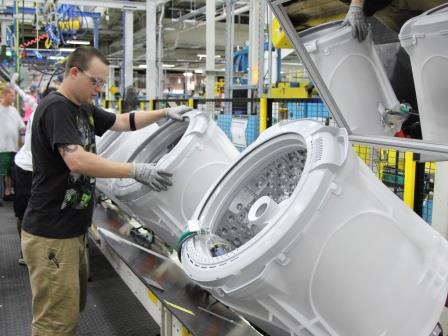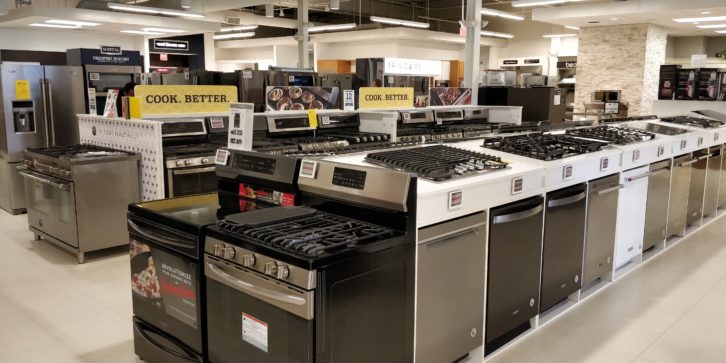
COVID-19 Comes Calling for CE Suppliers
With its unimaginable reach, COVID-19, or Coronavirus, has claimed tech events, business conferences, music festivals and even forced Disney World to go dark, but its havoc on CE supply chains may have longer lasting impacts than can even be known right now.
Manufacturing a diverse range of parts and complete products for U.S. tech companies, China’s total shutdown of its factories last month caused disruptions that may leave some tech companies without products to ship. CE manufacturers said they’re facing some uncertainties as the epidemic’s impact on supply chains remains questionable now and into the second quarter of the year.
The silver lining, if it can be called that, is that new cases of the Coronavirus were reportedly slowing in China at press time, and the country recently started getting back to work. The strict quarantine enacted to stop the outbreak, much like what is happening right now in the U.S., stopped China’s massive workforce from returning to their jobs while halting the second- largest economy in the world.
Surprisingly, many economic forecasters projected the virus wouldn’t harm the world economy or corporate profits, but then South Korea, then Italy, succumbed to the pandemic. With the U.S. now under siege, manufacturers are assessing the damage and figuring out what can be done.
“We continue working tirelessly to protect our supply chain and our ability to manufacture, sell and service our appliances,” said Julie Wood, Senior Director of Communications for GE. “We have invested significantly over the last few years in a world-class supply chain that has the flexibility to respond to a variety of challenges and scenarios. Based on the information currently available, we remain confident that we can continue supplying customers and owners.”
In the early weeks of January 2020, many CE companies with a full understanding of their supply chains already knew which parts originated in Wuhan and the Hubei province, and were making plans to minimize some—if not all—of the anticipated chaos.
 “In talking with several of the manufacturers in the different spaces we cover there has been some disruption as far as parts for the different units themselves, whether that’s electronics or appliances,” said Chad Evans, VP of merchandising, AVB Inc. “With furniture it’s obviously a bigger problem because it’s the entire unit itself coming out of the factories. Still, availability to this point has been okay, but there is some concern in certain categories where the main guts of the unit or maybe even the unit itself is coming directly from China. Some manufacturers have gotten a lot less promotional and have taken certain items off the promo roadmaps because there is concern that there will be lack of availability as we move into the second quarter.”
“In talking with several of the manufacturers in the different spaces we cover there has been some disruption as far as parts for the different units themselves, whether that’s electronics or appliances,” said Chad Evans, VP of merchandising, AVB Inc. “With furniture it’s obviously a bigger problem because it’s the entire unit itself coming out of the factories. Still, availability to this point has been okay, but there is some concern in certain categories where the main guts of the unit or maybe even the unit itself is coming directly from China. Some manufacturers have gotten a lot less promotional and have taken certain items off the promo roadmaps because there is concern that there will be lack of availability as we move into the second quarter.”
While Evans pointed out there were no major disruptions yet, the changing nature of the situation could play a role in the near future. “It’s usually a five-to-six-week lead time so we will start to see some of the issues as we get into April and May,” he said.
Perhaps more telling, Evans continued, is that retailers haven’t gotten urgent messaging from vendors at this point. “Manufacturers that I’ve talked with are not providing insight to retailers like ‘You need to load up because this stuff is going to be constrained,’” he said. “What they are saying is work closely with your local representative in planning the business and stay in close contact to see what the availability will be with certain products because it could change as we move forward. I don’t think anyone has specifics to say to a retailer that they need to load up on microwaves or 32-inch TVs because no one knows what the effect is going to be at this point.”

TVs, though, at least the 14 new OLED TVs in LGs 2020 lineup, are rolling out on time for spring and early summer deliveries, according to the company. The “GX” Gallery Series of 4K TVs, the 77-inch OLED77GXPUA ($5,999), 65-inch OLED65GXPUA ($3,499) and 55-inch OLED55GXPUA ($2,499), are set for arrival in April while the 55-inch OLED55CXPUA in the CX series, will be available this month. The rest of the models are scheduled for May and June.
“To be sure, the rapidly evolving COVID-19 outbreak has been causing widespread disruptions in the global supply network industry-wide,” said John Taylor, LG’s Senior Vice President, Public Affairs. “As a multinational corporation, LG Electronics maintains manufacturing facilities and suppliers all over the world, giving us the flexibility to best manage our supply chain. While we aren’t experiencing major disruptions at this time, LG is looking into ways to minimize the effect on our production schedule in the event of a drawn-out scenario.”
For manufacturers who might want to reference a past experience for guidance, there just hasn’t been anything quite like the Coronavirus.
“The only event that’s somewhat similar—and which happened recently— was the tariff situation,” AVB’s Evans said. “There was a lot of uncertainly around what availability would be and how to shift production from China because it wouldn’t be affordable to pay 25% higher costs. But the big difference is that we could still get product then. It was just coming at a higher cost versus this situation where we literally can’t get any product and don’t know when we’re going to be able to because the factories are only running at 30% or 50% capacity—or whatever the number is— right now and there’s no real sense of when things will be back to normal.”
 According to Brett Beveridge, founder and CEO of The Revenue Optimization Companies (T-Roc), a Coral Gables, Fla.-based firm that builds strategies for today’s biggest retailers and Fortune 500 companies, getting back to normal—at least here in the U.S.—probably won’t look like the old normal for manufacturers or retailers.
According to Brett Beveridge, founder and CEO of The Revenue Optimization Companies (T-Roc), a Coral Gables, Fla.-based firm that builds strategies for today’s biggest retailers and Fortune 500 companies, getting back to normal—at least here in the U.S.—probably won’t look like the old normal for manufacturers or retailers.
“There is panicked buying out there right now by consumers,” Beveridge said. “And consumers are looking for ways to make purchases now without having to get out of their cars. BOPIS—buy online pick up in-store or curb side—is going to become much more important along with retailers limiting the number of shoppers in the store at a time or moving to shop by appointment.”
Longer term, though, Beveridge sees what he calls a virus hangover. “Everyone is going to be more concerned after this pandemic passes,” he said. “Some retailers are going to benefit from this experience and some are not. What is evident is that an omni-channel presence is critical whether there is a virus, a storm or a war.”
Like what you’ve read? We’d love to hear from you! Your comment(s) will appear instantly on the live site. Do you want to know what retailers should be doing right now in response to the coronavirus? Click Here to read the full article on the South Florida Business Journal.








